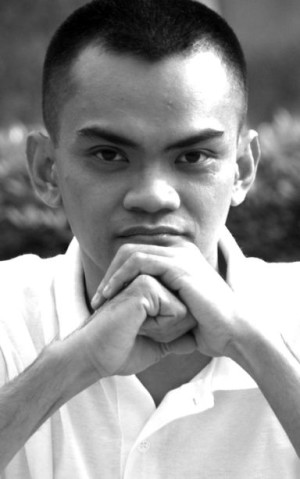
PAREDES
For those who experienced the dark years of Marcos dictatorship and the surge of people’s revolt that culminated in the People Power Revolution in Edsa in 1986, it is disturbing to see how the nation is about to repeat that chapter in our history, as we seem to be going through another period of democracy’s decline with the rise of a new populist authoritarian state.
In February 1986, Filipinos from all walks of life poured out in Edsa in response to the call of the Church to defend military dissidents who had withdrawn support to the fascist regime following massive civil disobedience being organized by the opposition.
With just their warm bodies and offerings of flowers, sandwiches, and prayers, the people stopped the tanks sent to invade the military camps where the rebels were holed up.
As the number of people joining the protest swelled, more and more soldiers turned to the side of the rebels who had turned the flag on their sleeves as symbol of defiance.
Renegade Philippine Air Force pilots showed support to the revolt by landing their choppers on the rebel camps or even strafing Malacañang Palace.
The rebels stormed the government TV channel, which had been broadcasting propaganda in support of the fascist regime and turned it over to the opposition.
The revolt was a conflagration fueled by various initiatives of different groups and individuals, all of whom were angered by the dictatorship’s yet another attempt to extend its rule by manipulating the results of the snap elections, in which the opposition clearly won. With the mob approaching the palace, the ailing dictator had no choice but to pack up and leave.
As soon as the euphoria died down, the groundwork to restore democracy began.
The revolutionary government immediately gathered legal luminaries in a Constitutional Commission that drafted a new charter, one that ensured the preservation of civil liberties, check and balance in the tripartite system of government, and all the safeguards to abuses of power, particularly by the armed authorities.
For this reasons, the Commission on Human Rights, the Office of the Ombudsman, and other independent bodies were created to hear and work on people’s complaints against those in authority.
In the year after the Edsa Revolution, the people ratified the new Constitution in a nationwide plebiscite
It was a clear vindication of the revolution and the Cory Aquino government by the Filipino people.
The new democratic government also managed to survive several coup attempts by fascist elements that somehow remained in the military.
The new government, despite its many flaws and weaknesses, was able to demonstrate the supremacy of civilian rule over the armed forces and ultimately the return of the rule of law.
This radical change in the structure of government and the political culture that came in its wake was a clear evidence of the revolutionary character of that people’s uprising.
Its relatively peaceful and civilized way of conducting revolution became a model for other countries.
After Edsa, peoples in Eastern Europe and in China rose against their own autocratic leaders asking for freedom and democracy.
They looked up to the Edsa People Power as inspiration.
Always given grand reception and much praise by international media during her state visits in the United States and Europe, Cory Aquino became a symbol of soft power that is able to defeat any Strong Man ruler.
For decades since we regained our democracy, we celebrated those four days of the Edsa Revolution recalling the courage of the ordinary people and the values of freedom, human rights, equality, and rule of law.
But today, there has been massive attempts to revise that history, a deliberate and well-funded campaign that began even before the national elections in 2016.
This campaign to distort the history of the Marcos dictatorship and the People Power Revolution that booted it out is mainly waged in the social media, with paid hacks and keyboard warriors targeting young people who were not yet born during those years and were largely clueless to their true implications.
That campaign seems to have worked not only to revise but also reverse the narratives of the Marcos dictatorship and the peaceful revolution that ended it in 1986.
Today, the government itself seems to be the main champion of this great reversal. It has authorized the burial of the dictator in the Libingan ng mga Bayani.
It has extended its own declaration of martial law to another year and even planned to apply it nationwide.
With the help of a supermajority in Congress, it has disparaged the opposition and the supposedly independent branches of government.
The massive propaganda has successfully changed people’s perception of human rights, which is now seen as an obstacle to the eradication of criminality and terrorism.
It has successfully demonized the opposition and the media that is critical of government policies.
And, as the trauma of dictatorship starts to dissipate with the passing of that generation that suffered from it, the myth of the Strong Man is popular again.
As we are now being conditioned to forget the revolution that restored our democratic values, we are being mesmerized by the myths of the grandeur of Strong Man rule both in the past and in the present that is still beginning to take shape.
Disclaimer: The comments uploaded on this site do not necessarily represent or reflect the views of management and owner of Cebudailynews. We reserve the right to exclude comments that we deem to be inconsistent with our editorial standards.
